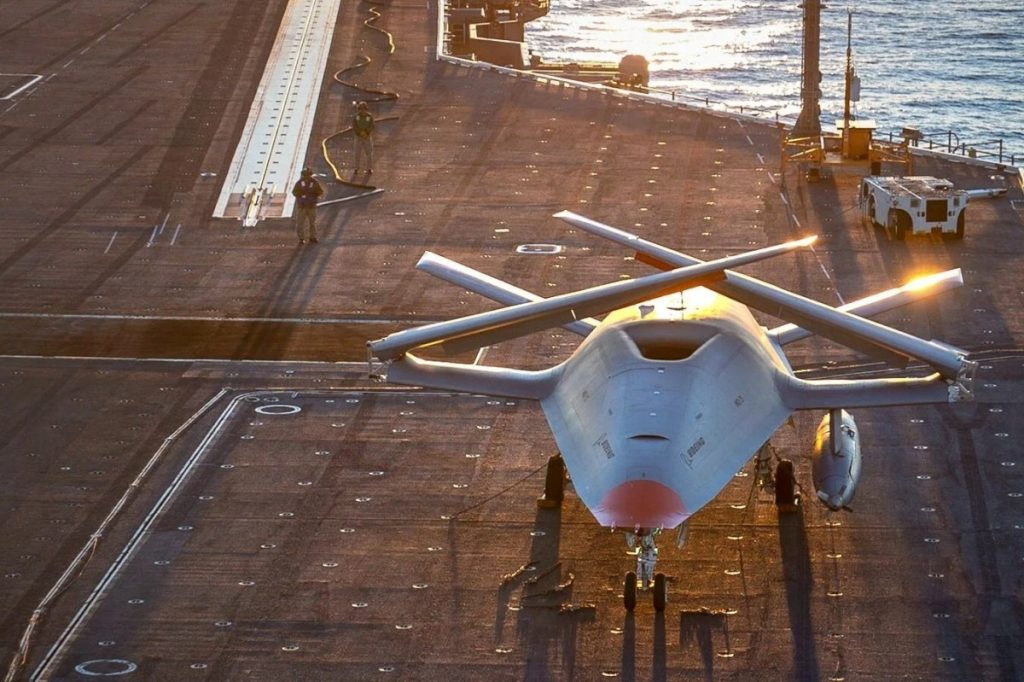Naval aviation is in the midst of a major shift, and at the center of that change is the MQ-25 Stingray—the U.S. Navy’s first carrier-based unmanned aerial refueling drone. Aircraft carriers have long served as the cornerstone of U.S. power projection, but until now, all critical support missions, including refueling, depended entirely on manned aircraft. The MQ-25 flips that model, ushering in a new era where unmanned systems don’t just assist—they redefine how carriers operate.
The Stingray made headlines in June 2021 when a Boeing test aircraft successfully refueled a Navy F/A-18 Super Hornet in midair. The exercise, flown over Illinois, was more than just a technological demonstration.
It demonstrated that unmanned systems can fly safely and effectively with human pilots under realistic conditions. The Super Hornet flew in formation just 20 feet away from the MQ-25 and completed both dry and wet fuel transfers, an unmistakable sign of operational capability.
Although its main purpose is to refuel planes, the MQ-25 has advantages well beyond supply. Rear Adm. John Meier, Naval Air Force Atlantic commander, has referred to the Stingray as “revolutionary” in the development of the Air Wing of the Future.
As it assumes the refueling function, the drone releases F/A-18s for combat and strike missions, extending operational reach, increasing firepower, and enhancing efficiency without additional aircraft or pilots.
Putting an unmanned drone on a sea carrier deck full of people involved in meticulous planning and thorough testing. Engineers first remotely drove the MQ-25 along lines painted on mock carrier decks at Chambers Field in Norfolk. The exercises ultimately culminated in live demonstrations on board the USS George H.W. Bush, proving that the drone was safe and could move smoothly within the hectic pace of carrier operations.
The MQ-25 is more than one aircraft—it is a building block towards a networked force of manned and unmanned systems. This notion, called manned-unmanned teaming (MUM-T), conceives of pilots and autonomous drones functioning as a unified, coordinated force.
Defense analyst Heather Penney of the Mitchell Institute points out that success in the future will depend not just on developing sophisticated machines, but on designing systems in which humans and machines can learn to understand and work with each other. Projects like the “Two View Autonomy Framework” are already doing just that.
Since the development contract was awarded to Boeing in 2018, the program has progressed rapidly. In a matter of years, the MQ-25 has successfully refueled an F/A-18, an F-35C, and an E-2D Advanced Hawkeye, showing flexibility throughout the fleet. The Navy is now working to expedite operational deployment, especially with the increasing necessity to operate in ever more challenging and contested environments.
Ahead, placing MQ-25s on Ford- and Nimitz-class carriers will redefine how the Navy projects airpower. The Stingray enables strike aircraft to refuel away from the carrier, stretching their range without exposing manned platforms to harm. Beyond refueling, it introduces the possibility of other unmanned uses—from reconnaissance drones to autonomous strike vehicles and “loyal wingman” ideas.
Each lesson gained from the MQ-25, whether technical, tactical, or procedural, is part of the overall drive to modernize naval aviation. In an age where speed, accuracy, and stealth become more and more important, unmanned aircraft such as the MQ-25 are no longer second-stringers—they are becoming part of the mission itself.


